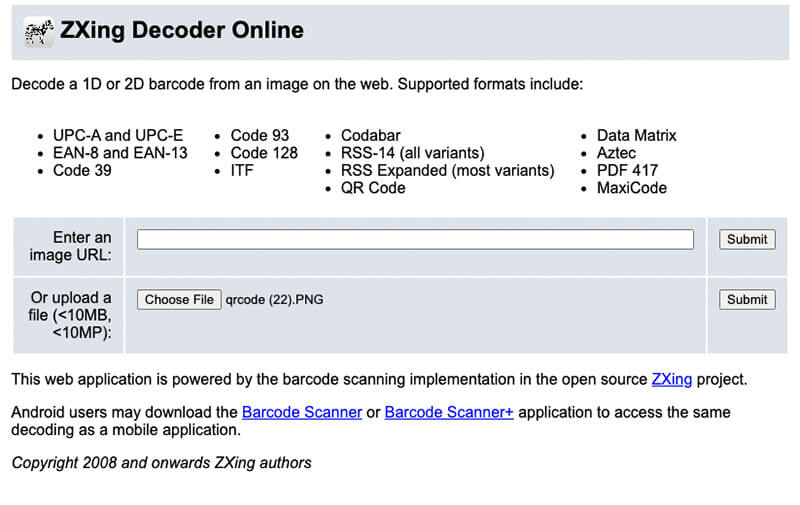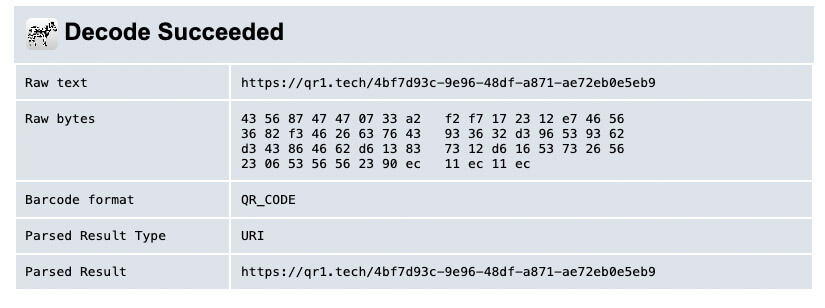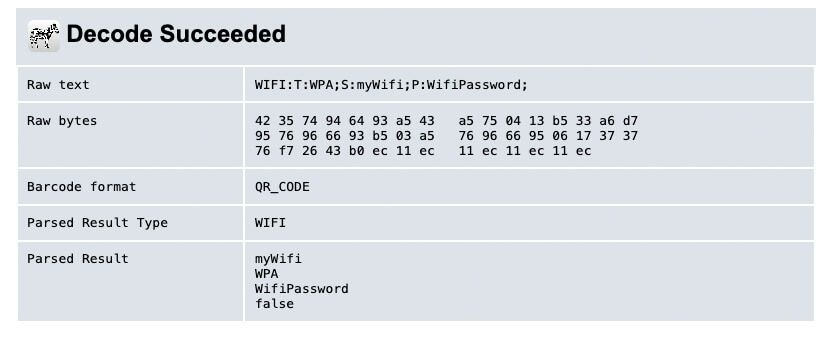Is a qr code a link?
No, a static QR code can be a link or a string, depending on the type of static QR code; however, a dynamic QR code itself is always a link.
Static QR codes come in many types, such as email QR codes, contact QR codes, WiFi QR codes, map QR codes, Facebook QR codes, website QR codes, etc. Map QR codes, Facebook QR codes, and website QR codes all fall under the link type. When users scan these QR codes, it's equivalent to opening the corresponding link in a browser (e.g., opening a website or a Facebook page).
How to Convert a QR Code into a Link?
To convert a QR code into a link or string, you need some tools. For example, we use the ZXing Decoder Online tool. This is an online decoding tool. Upload the QR code image and submit it; you will see the decoded QR code as a link, which could be a website link or a dynamic QR code.

Upload another QR code, and after decoding, you can see:

This time the uploaded QR code is a WiFi QR code, and users can directly connect to WiFi by scanning it. If the QR code is a contact QR code or an email QR code, you can see the corresponding string data after decoding.

Are QR Codes Safer than Links?
From a technical perspective, a QR code and a link are essentially the same, just with different ways to access them. Users need to scan the QR code to open the link. However, links are displayed in plain text, and you can see the link's domain. If it's an unfamiliar or untrusted domain, you can choose not to click on it. In contrast, the content of a QR code is not visible until you scan it and open the link in a browser. This might pose some potential risks because the domain linked to the QR code is only revealed after scanning. Therefore, the main security risk comes from untrusted websites, not the QR code or link itself. In conclusion, we should avoid scanning or opening QR codes or links from unknown sources.
The security of QR codes is a topic of concern for many people. You can read more about it in the article "In-Depth Analysis: Security and Privacy Protection of QR Code Builders."
Can I Modify the Link in a QR Code after It's Created?
If you create a dynamic QR code, you can modify the link at any time without changing the QR code image, even if the QR code has already been printed and distributed. This is very helpful for commercial use.
To delve deeper, a dynamic QR code is essentially a link to a specific URL. When we modify the content of the page corresponding to the URL, the content of the QR code is also modified accordingly. However, since the URL does not change, the QR code image does not need to be regenerated.
If you create a static QR code, once it is generated, you cannot modify any content within the QR code. However, static QR codes are generally free and can be used permanently once generated, making them very suitable for personal or small-scale use.
Can a QR Code Contain Two Links?
Yes, a dynamic QR code can contain two or even more links. DeepQR offers the functionality to add multiple links within one QR code. You can even add multiple different components within a single QR code, such as text, images, links, PDFs, locations, etc.
Which is Better: QR Code or URL?
Deciding whether to use a QR code or a URL depends on your specific needs and the context in which you are operating. Each has its own advantages and is suited to different scenarios.
When to Use a QR Code
QR codes are particularly useful in situations where you want to facilitate quick and easy access to digital content via mobile devices, especially in physical spaces. For example:
Restaurants: Guests can scan a QR code on the table to view the menu on their phones.
Trade Shows: Attendees can scan a QR code to access your product catalog or additional information about your offerings.
Retail Stores: Customers can scan a QR code at the entrance or on product tags to see promotional details or discounts.
In these scenarios, QR codes can enhance the customer experience by providing instant access to relevant information without the need to manually type in a URL. They are ideal for environments where convenience and speed are crucial.
When to Use a URL
URLs are better suited for situations where you are communicating with an audience that is already online and has a certain level of trust in your brand. For example:
Email Marketing: Including a URL in your email allows recipients to click through directly from the message.
Social Media: Posting a URL on your social media profiles or in comments makes it easy for followers to visit your website or a specific page.
Digital Advertisements: Using URLs in your online ads enables viewers to click and be directed immediately to your landing page.
URLs are visible and can provide more context, such as the domain name, which can help users judge the trustworthiness of the link before clicking.
In conclusion, whether you should use a QR code or a URL depends on your specific use case. QR codes are excellent for on-the-go access in physical locations, while URLs are more suited for online interactions where the link can be directly accessed and evaluated. Understanding the strengths and appropriate applications of each will help you make the best choice for your marketing and communication strategies.
